Kyoto’s rich cultural heritage comes alive on the Buddhism, Art, and Gardens walking tour. Visitors explore iconic temples, encountering intricate artworks and serene gardens that reveal the profound influence of Buddhism on the city’s architecture and aesthetics. Guided by experts, the tour offers insights into this captivating blend of spirituality and aesthetics, leaving participants eager to further discover Kyoto’s timeless allure.
Good To Know
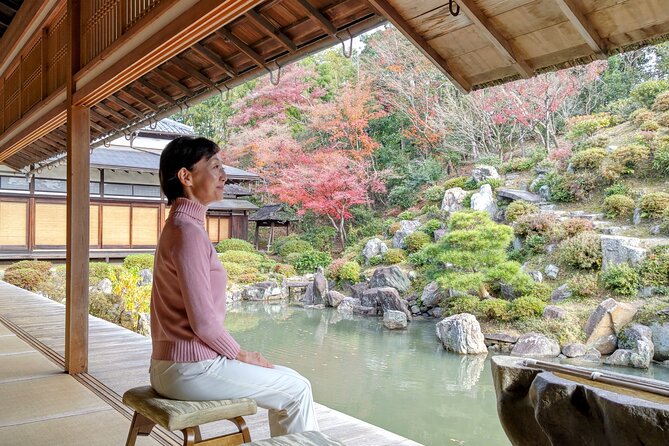
- Explore the 1,001 life-size Kannon statues at the 13th-century Sanjusangendo Temple, offering insights into Kyoto’s Buddhist traditions and artistic mastery.
- Discover the impressive gardens and Shoin-zukuri architecture at the 13th-century Chishakuin Temple, providing a peaceful atmosphere and historical context.
- Understand the significant influence of Buddhism on Kyoto’s art, architecture, and cultural identity, as exemplified by the iconic Sanjusangendo and Chishakuin Temples.
- Appreciate the intricate interiors, delicate brush strokes, and vibrant colors of the Buddhist-inspired art and architecture in Kyoto.
- Navigate the convenient meeting point at the Open Air Plaza in Kyoto Station, with the tour being fully accessible for wheelchair and stroller users.
Exploring Sanjusangendo Temple

Sanjusangendo Temple stands as a testament to Japan’s rich Buddhist heritage.
Visitors will be awestruck by the grand main hall, home to 1,001 life-size statues of the Buddhist deity Kannon. These wooden statues, dating back to the 13th century, are meticulously carved and display remarkable craftsmanship.
The temple’s long, narrow layout allows guests to appreciate the scale and grandeur of this impressive structure.
Strolling through the spacious grounds, guests can admire the beautiful gardens and ponds surrounding the temple.
Sanjusangendo offers a profound glimpse into Kyoto’s centuries-old Buddhist traditions and artistic mastery.
Find more activities and experiences we've covered in Kyoto.
Discovering the Chishakuin Temple
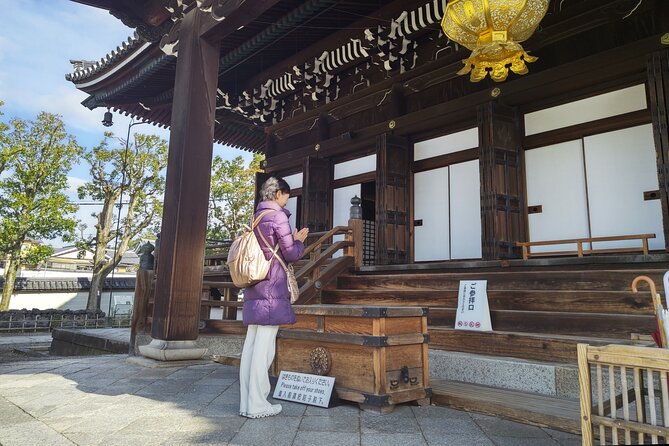
After exploring the grandeur of Sanjusangendo Temple, the walking tour continues to the serene Chishakuin Temple.
This 13th-century temple is famous for its impressive gardens, which feature meticulously pruned trees, ornamental ponds, and stone bridges. Visitors can stroll through the peaceful grounds, admiring the intricate architectural details and the tranquil atmosphere.
The highlight is the Hojo, the former abbot’s residence, which showcases stunning examples of Shoin-zukuri style with its elegant shoji screens and tatami mats.
The tour guide provides insights into the temple’s history and significance, enhancing the overall experience.
Understanding the Significance of Buddhism in Kyoto
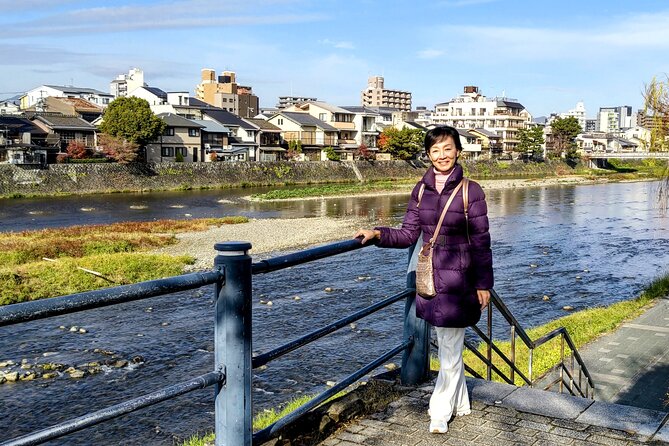
As the walking tour progresses, visitors gain a deeper understanding of the significance of Buddhism in Kyoto. Buddhism has profoundly shaped the city’s art, architecture, and cultural identity over centuries.
The tour explores Sanjusangendo Temple, renowned for its 1,001 statues of the Buddhist deity Kannon. Visitors marvel at the temple’s impressive wooden structure and intricate carvings.
At Chishakuin Temple, they discover the importance of Zen Buddhism and its influence on traditional gardens. Through these experiences, travelers better appreciate Kyoto’s rich Buddhist heritage and its enduring impact on the city’s spiritual and visual landscape.
Appreciating the Art and Architecture
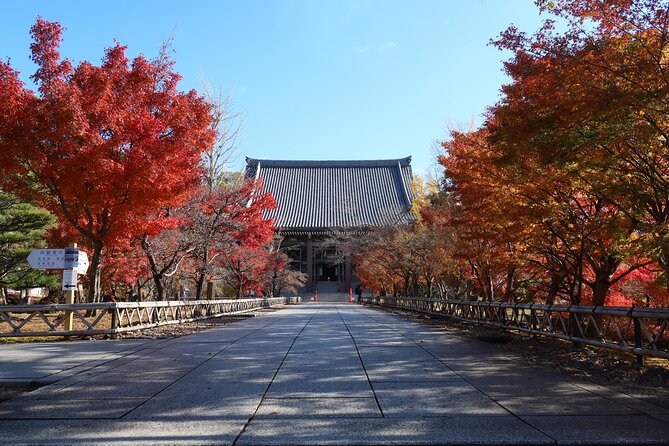
Alongside Buddhism’s profound influence, the walking tour allows visitors to appreciate Kyoto’s rich art and architecture.
Participants will explore the intricate interiors and ornate details of Sanjusangendo Temple, known for its 1,001 statues of the Buddhist deity Kannon.
At Chishakuin Temple, they’ll admire the delicate brush strokes and vibrant colors of the temple’s paintings and calligraphy.
Throughout the tour, the guide will provide insights into the artistic techniques and cultural significance of the structures, helping travelers gain a deeper understanding of Kyoto’s artistic heritage.
Taking in the Beauty of Kyoto’s Gardens
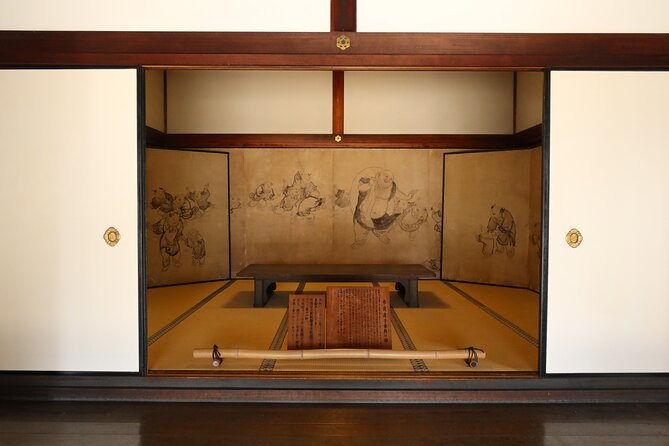
The walking tour also immerses visitors in the serene beauty of Kyoto’s exquisite gardens. Travelers step into sanctuaries of tranquility, surrounded by meticulously manicured landscapes, koi ponds, and centuries-old pagodas. The tour includes visits to two renowned gardens:
| Garden | Highlights |
|---|---|
| Chishakuin | Exquisite rock gardens, moss-covered paths, tea house |
| Sanjusangendo | Stunning temple gardens, ancient pine trees, iconic architecture |
These oases of calm provide a welcome respite from the bustling city, allowing participants to fully enjoy the natural beauty and serenity that defines Kyoto’s renowned gardens.
- Full Coverage Kyoto Private City Tour
- Kyoto Casual Evening Pontocho Food Tour
- Kyoto Fushimi Hidden Route Hiking & Soba Lunch
- Kyoto Night Walk Tour (Gion District)
- Gion and Fushimi Inari Shrine Kyoto Highlights With Government-Licensed Guide
- Arashiyama Bamboo Grove Day Trip From Kyoto With a Local: Private & Personalized
Learning About the History and Culture
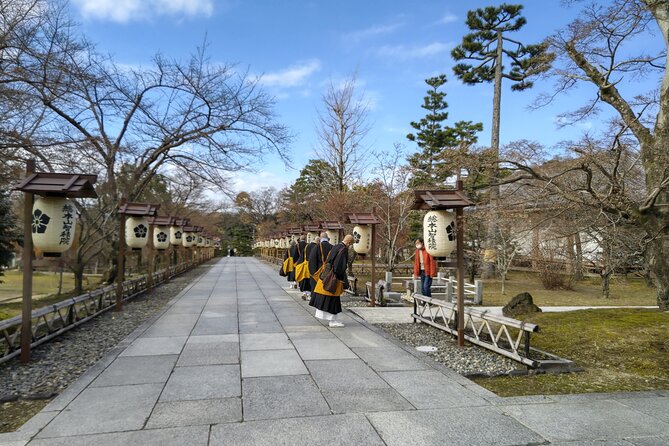
While exploring Kyoto’s iconic temples and gardens, the walking tour also delves into the rich history and vibrant culture of this ancient capital.
The tour guide shares insights into:
The significance of Buddhist temples, their architectural styles, and the rituals performed within.
The influence of Japanese art forms, such as calligraphy and traditional painting techniques, on the temple decor.
The importance of gardens in Japanese culture, as spaces for contemplation and aesthetic appreciation.
The role of Kyoto as the imperial capital for over a millennium, shaping the city’s enduring cultural identity.
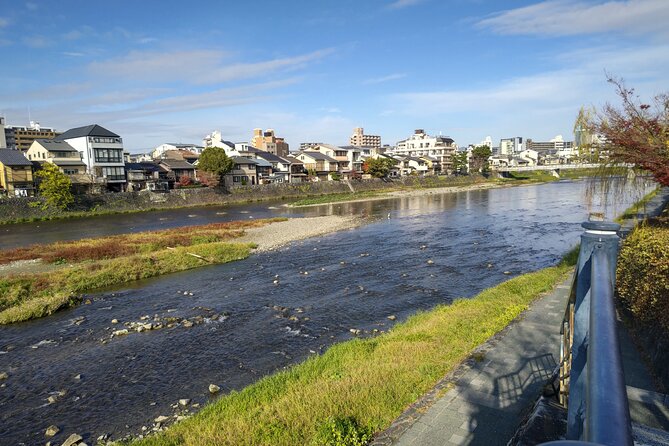
When participants arrive at the meeting point, they’ll find the Open Air Plaza (Ozora Hiroba) at Kyoto Station’s Higashishiokoji Kamadonocho location in the Shimogyo Ward. The plaza is wheelchair and stroller accessible, and near public transportation. The tour meeting point is easily accessible, making it convenient for travelers to find.
| Meeting Point Details | ||
|---|---|---|
| Location | Kyoto Station | Shimogyo Ward |
| Specific Area | Open Air Plaza | Ozora Hiroba |
| Accessibility | Wheelchair | Stroller |
| Transportation | Near | Accessible |
| Convenience | Easy to Find |
The tour ends at the same meeting point, ensuring a smooth start and finish to the Kyoto walking experience.
Accessibility and Additional Information
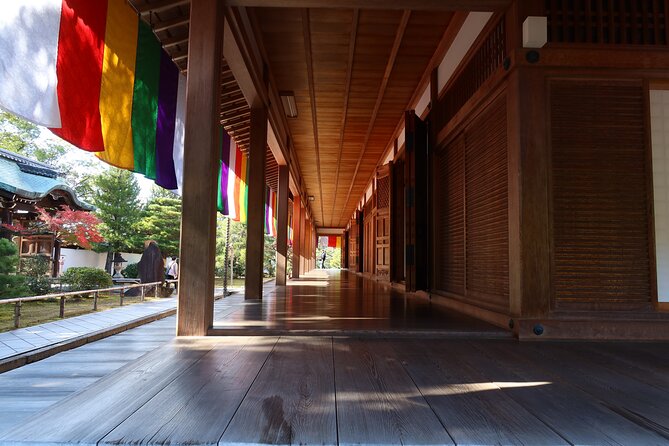
Wheelchair and stroller users can comfortably participate in the Kyoto Walking Tour, as the meeting point at the Open Air Plaza (Ozora Hiroba) in Kyoto Station is fully accessible.
Transportation to the tour sites is also wheelchair-friendly. Most travelers can join, with the tour guide-interpreter providing a great experience for all participants.
The tour offers several convenient features:
- Confirmation within 48 hours of booking, subject to availability.
- Reserve Now and Pay Later option for flexibility.
- Select time and check availability online.
- Free cancellation up to 24 hours before the experience starts.
Common Questions
Can I Bring My Own Food and Drinks on the Tour?
Based on the overview, the tour does not include food or beverages. Travelers can bring their own food and drinks to consume during the tour, as long as they don’t disrupt the experience for others.
Is There a Dress Code or Specific Attire Required?
There’s no dress code, but comfortable walking shoes and weather-appropriate attire are recommended. Casual clothing is fine, as the tour focuses on the sights rather than strict dress requirements.
Are There Any Age Restrictions or Minimum/Maximum Age Limits?
The tour doesn’t have any specific age restrictions. It’s suitable for most travelers, with no minimum or maximum age limits. Participants of all ages are welcome to join the walking tour.
Can I Take Photographs or Videos During the Tour?
Participants are generally allowed to take photographs and videos during the tour, subject to any restrictions or rules at the specific sites visited. It’s best to check with the tour guide for any specific guidelines.
How Much Walking Is Involved and What Is the Terrain Like?
The tour involves extensive walking on both paved and unpaved terrain. Visitors should expect to cover several miles over the course of the day and be prepared for uneven surfaces, hills, and stairs. Comfortable walking shoes are recommended.
The Sum Up
The Kyoto Walking Tour offers a captivating exploration of the city’s rich cultural heritage. Guided by knowledgeable experts, you will visit iconic sites, gain insights into the significance of Buddhism, and enjoy the beauty of Kyoto’s temples and gardens. This tour provides a unique opportunity to discover the art, architecture, and history that have shaped the city’s distinctive character.
More Tour Reviews in Kyoto
Looking for something different? Other Kyoto activities we've written about
- Hidden Kyoto- Countryside & Local Life – Private Car Tour
- Kyoto Gion: Japanese Traditional Experience -Kimono, Yukata
- Kyoto Osaka Kyoto and Nara Customized Private Guided Tour
- Kyoto Popular Tour : Learn Japanese Philosophy From Kyoto
- Scenic Riverside Ride in East Kyoto
- Kyoto Culinary Tour With a Chef!
- Kyoto: Top Sake Region Tour – 2.5 Hours, 3 Tasting Spots
- Hidden Temples in Kyoto a Self-Guided Zen Tour
- 2 Hour Private Tour of Arashiyama Highlights
- Kyoto: Nijo Castle, Noble Architecture and Gardens Guided Tour
- Kyoto: Discover Every Bit of Ginkakuji Temple in 60 Minutes
- Kyoto Afternoon and Night Tour With Japanese Traditional Dinner
